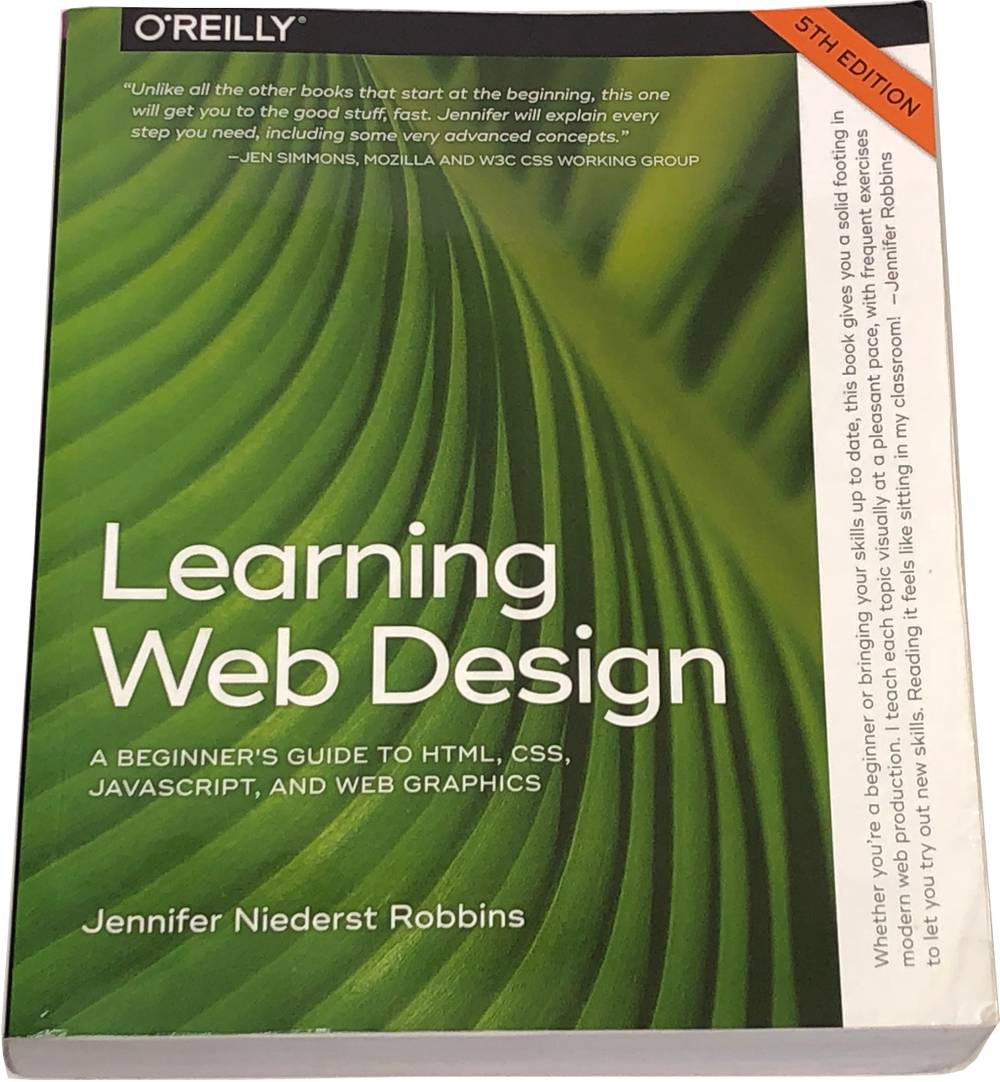The best way to quickly communicate with a large number of people is through the web. As a data scientist, understanding how web pages work can inform how you choose to present data and conclusions about data. Plus, you may benefit professionally from having a personal website or blog. Since the web is such a powerful tool for many different industries, web design is a broad field. There are two ways to get started. Perhaps the most common way is to use a template system like WordPress etc. You won't really understand web development by using such a system, but you can easily create an attractive and functional website. The second route involves learning the three basic language ecosystems that underlie the front end
part of web development: CSS, HTML, and Javascript. We feel this second option is more useful and edifying in the long run; plus, you can still use WordPress.
Recommended Books
Learning Web Design
Jennifer Robbins

Key Features
- Guided Exercises
- Errata
Key Topics
- Cascading Style Sheets (CSS)
- Colors
- Element Boxes
- Embedded Media
- Flexbox and Grid
- Floating and Positioning
- Formatting Text
- Forms
- Hypertext Markup Language (HTML)
- Images
- Javascript
- Links
- Marking Up Text
- Progressive Enhancement
- Responsive Web Design
- Scalable Vector Graphics (SVGs)
- Table Markup
- Transitions, Transforms, and Animation
- Web Development Tools
- Web Image Production and Optimization
Description
This is a great book for getting started with web design. HTML, CSS, and Javascript are covered in sufficient depth to create functioning websites, and there is a lot of useful information about tools for web development. Robbins does a great job with the details of using images on the web, as well as the complexities introduced by the proliferation in browsing device sizes. The book is slightly cumbersome in that it tries to be exhaustive about topics, such as font attributes, that you may not be interested in for a while. It's easy enough to skim through these sections though. We suspect that the text and exercises are well within the reach of a typical high-schooler, so consider this a fun and easy read. After finishing the book, you should be able to create simple websites and understand the basic workings of more complicated ones.